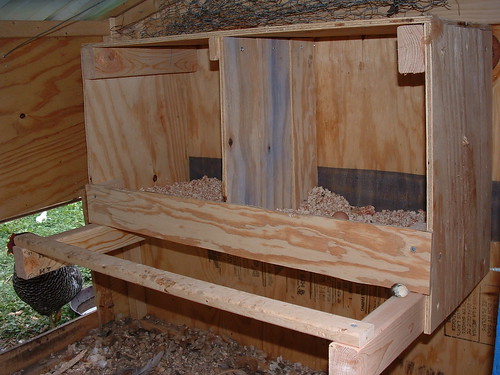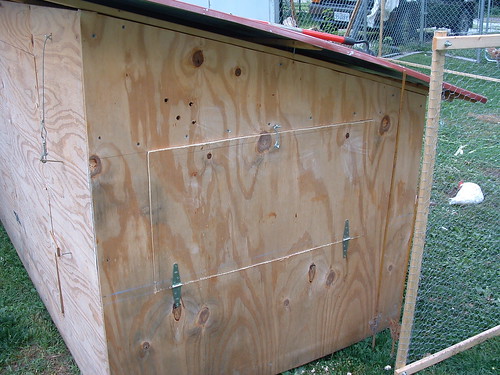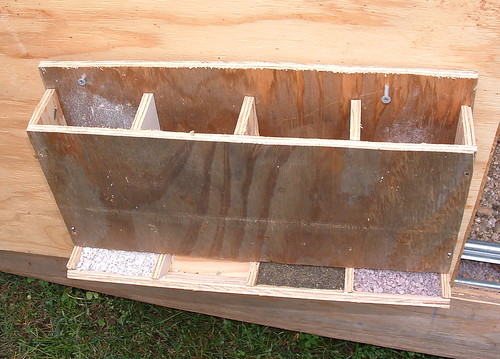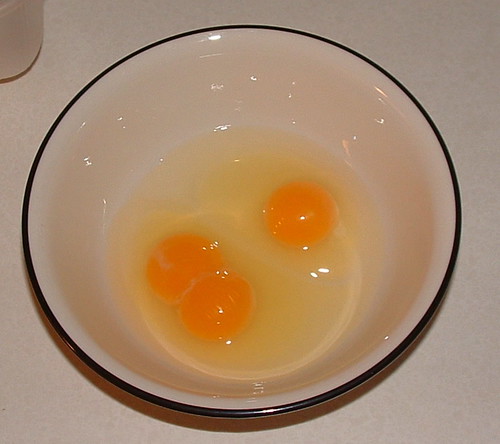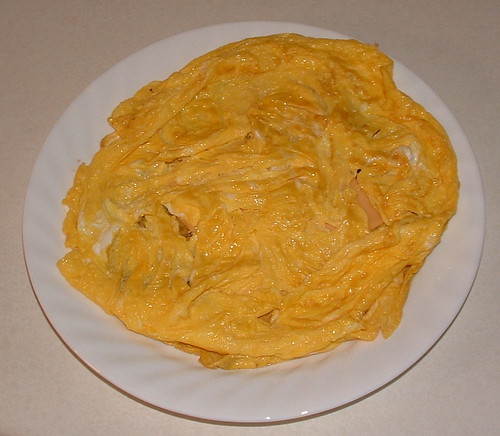Which Came First?
We’ve answered the age old question: the chickens came first, in late March; the eggs about four and a half months later.
Last Monday, I heard a different sort of clucking coming from the chicken house. I went to see if they were being attacked by weasels or something, and all I found was the Leghorn walking around inside. The weird part was that she didn’t run out as soon as I opened the door. I thought for a second that maybe she was looking for a place to nest, but I wasn’t expecting eggs for a few weeks yet, so I shrugged it off.
A few hours later, I went and looked again, and sure enough, there was an egg lying in the bedding. A white one, so I knew it came from the Leghorn.
Uh oh, I wasn’t quite ready yet. So I hustled out to the hardware store and got a few things I needed to build their nesting boxes. I had already pretty much figured out in my head how I would do it, so it didn’t take long. I fastened it up against one wall, and built a door that hinges down so we can collect the eggs from the outside without disturbing them. A roost sticks out in front, so they can jump up on that and then step into the boxes.
While I was at it, I built a four-section feeder from some scrap plywood. In the picture below, it’s holding (left to right) oyster shell, which they need for calcium; kelp meal, which has a lot of nutritious stuff; and grit, which they use to chew their food in their gizzards.
Since then, the Leghorn has laid almost one egg a day, and we’ve gotten a few brown ones too. I’m pretty sure the Buff Orpington is laying, and I think the Australorp may be too. They’re the other two I’ve seen sitting in the boxes, anyway. I know it’s at least two of them, because we got two brown eggs in the same day, and one was pinker than the other. That one in the picture made it an even dozen.
The eggs they lay in the first month are called “pullet eggs,” and they’re pretty small, but I figured it was time to eat some. I started cracking some into a bowl to make an omelette. The second one was a double-yolker! That’s when an egg has two yolks. Identical twins, I guess. That can happen anytime, but it’s more common when the chickens are first laying and working out the details.
And here’s the completed 6-egg omelette! (I figure that’s about equivalent to 3-4 normal-sized eggs.) It was delicious. Having chickens in the backyard is even cooler than I thought it’d be.
If you enjoyed this article, why not rate it and share it with your friends on Twitter, Facebook, or StumbleUpon?
loading...

